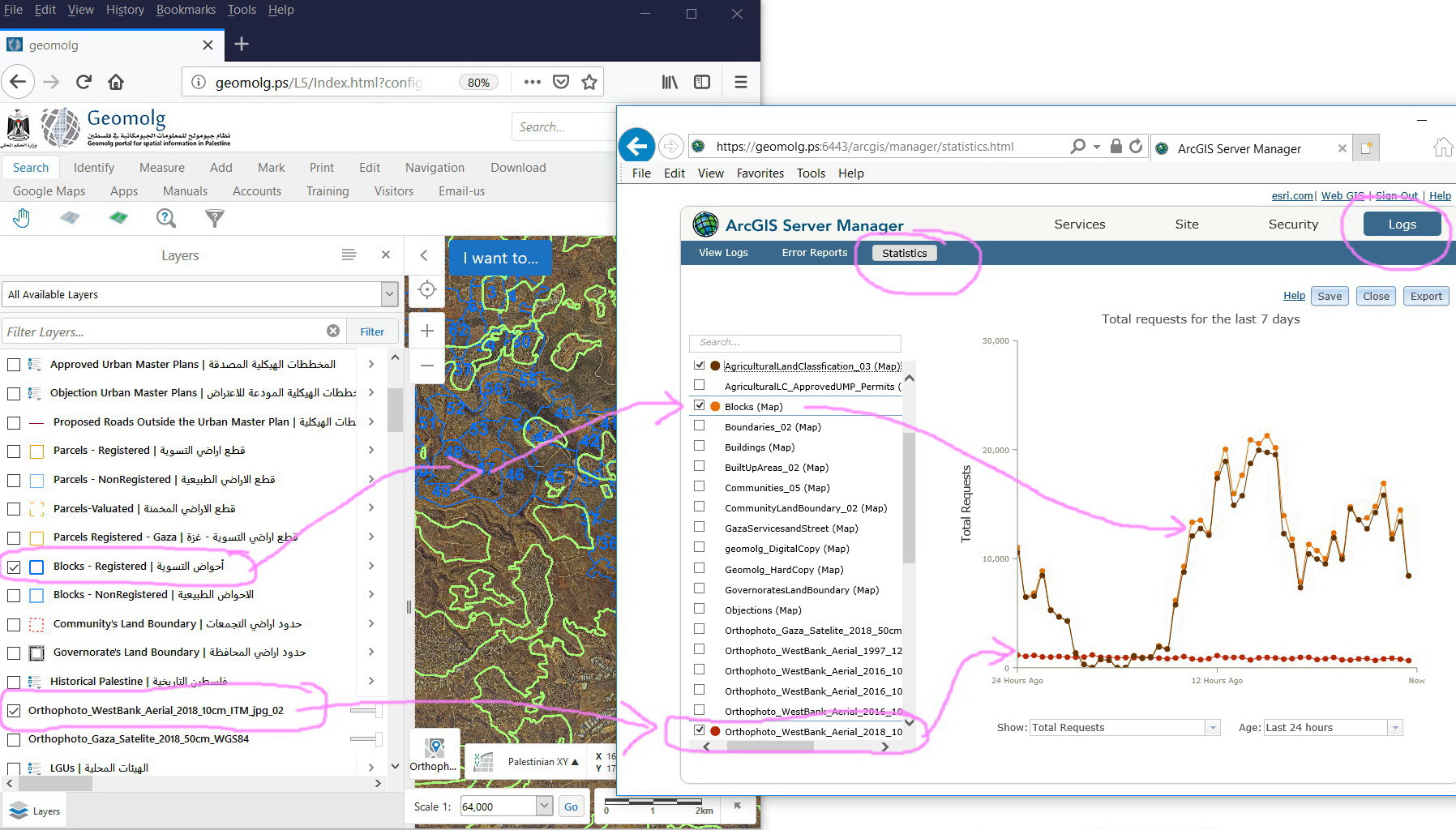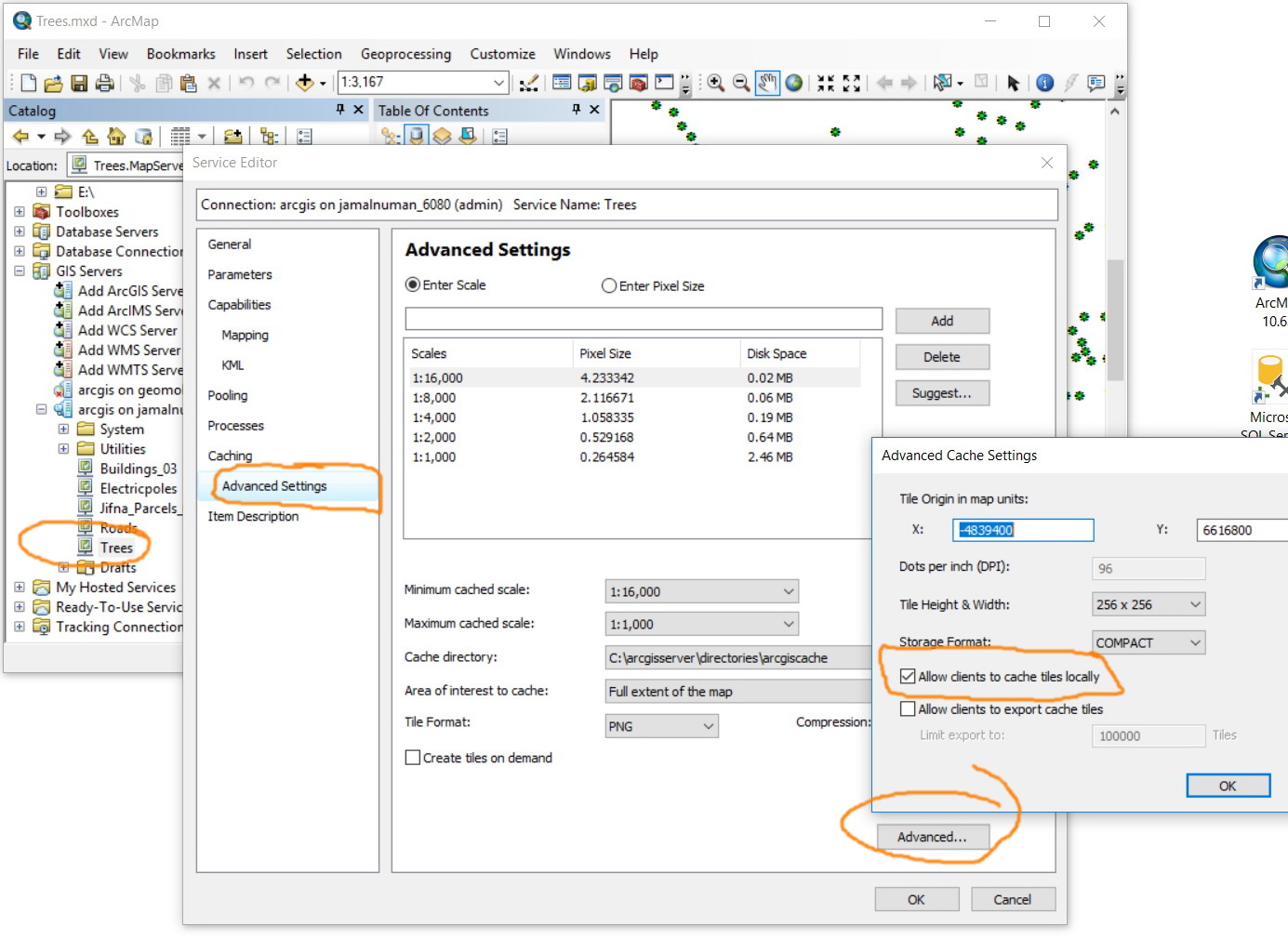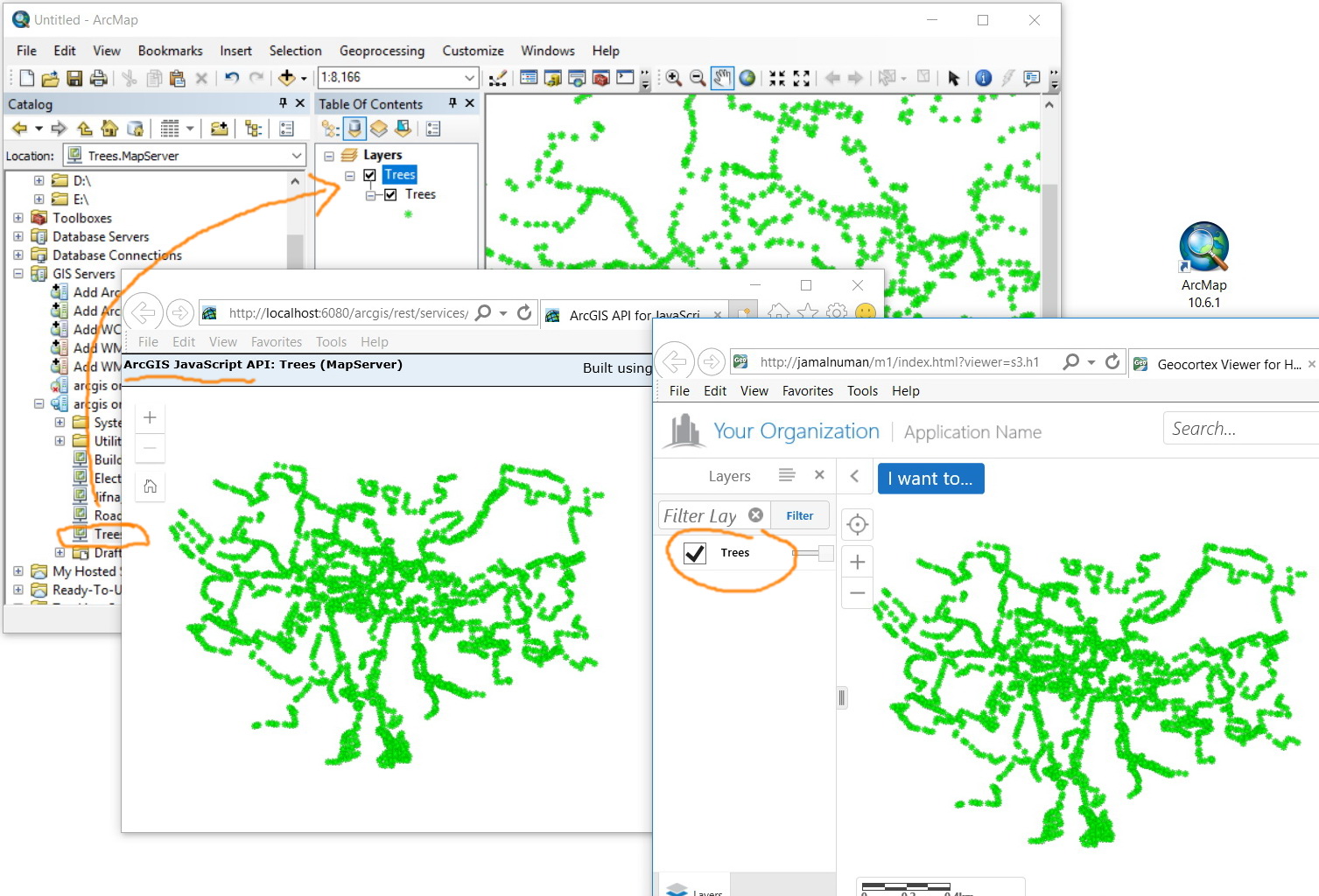- Home
- :
- All Communities
- :
- Products
- :
- ArcGIS Enterprise
- :
- ArcGIS Enterprise Questions
- :
- The ArcGIS statistics shows fewer number of reques...
- Subscribe to RSS Feed
- Mark Topic as New
- Mark Topic as Read
- Float this Topic for Current User
- Bookmark
- Subscribe
- Mute
- Printer Friendly Page
The ArcGIS statistics shows fewer number of requests for cached services in comparison with dynamic services,
- Mark as New
- Bookmark
- Subscribe
- Mute
- Subscribe to RSS Feed
- Permalink
The ArcGIS statistics shows fewer number of requests for cached services in comparison with dynamic services,
In our web mapping application, some dynamic services in addition to the imagery cached service are turned on by default which suggests to have the same number of requests for both dynamic and cached services. However, when reviewing the ArcGIS statistics chart, we observed that the cached service has fewer number of requests in comparison with other dynamic services.
What might this indicate for?
Thank you
Best
Jamal

Jamal Numan
Geomolg Geoportal for Spatial Information
Ramallah, West Bank, Palestine
Solved! Go to Solution.
Accepted Solutions
- Mark as New
- Bookmark
- Subscribe
- Mute
- Subscribe to RSS Feed
- Permalink
Hi Jamal,
You could be seeing this behavior due to the fact that, when the cached Map Service was published, it was specified to, "allow clients to cache tiles locally". This means that, once the client has made an initial request to the cached Map Service to retrieve specific tiles exposed through that cached Map Service, the client then stores a local copy of those tiles. This makes it so that additional requests do not have to be made to the cached Map Service to retrieve tiles once the initial request has been made by the client.
Keep in mind that the client referred to above only applies to Esri clients, such as ArcMap, or those built on top of the ArcGIS API for JavaScript. The idea behind this setting is that it can help the client to view tiles for a certain area more quickly when returning to that area after initially visiting it. The cache would have to be cleared in order for the client to retrieve a new copy of the tiles.
Please see the following document that discusses this setting briefly:
Available map and image cache properties—Documentation | ArcGIS Enterprise
I hope that this is helpful to you, Jamal.
-Jacob
- Mark as New
- Bookmark
- Subscribe
- Mute
- Subscribe to RSS Feed
- Permalink
Hi Jamal,
You could be seeing this behavior due to the fact that, when the cached Map Service was published, it was specified to, "allow clients to cache tiles locally". This means that, once the client has made an initial request to the cached Map Service to retrieve specific tiles exposed through that cached Map Service, the client then stores a local copy of those tiles. This makes it so that additional requests do not have to be made to the cached Map Service to retrieve tiles once the initial request has been made by the client.
Keep in mind that the client referred to above only applies to Esri clients, such as ArcMap, or those built on top of the ArcGIS API for JavaScript. The idea behind this setting is that it can help the client to view tiles for a certain area more quickly when returning to that area after initially visiting it. The cache would have to be cleared in order for the client to retrieve a new copy of the tiles.
Please see the following document that discusses this setting briefly:
Available map and image cache properties—Documentation | ArcGIS Enterprise
I hope that this is helpful to you, Jamal.
-Jacob
- Mark as New
- Bookmark
- Subscribe
- Mute
- Subscribe to RSS Feed
- Permalink
Thank you very much Jacob for the very useful input.
Could you please indicate where the cached service (when accessed) are stored in the local machine of the client? In which sense this is applicable in case of consuming cached service in the ArcMap?


Jamal Numan
Geomolg Geoportal for Spatial Information
Ramallah, West Bank, Palestine
- Mark as New
- Bookmark
- Subscribe
- Mute
- Subscribe to RSS Feed
- Permalink
Hi Jamal,
In the case of ArcMap, the data for the cached Map Service would be stored in the local display cache upon consuming the cached Map Service. The local display cache is a local disk cache stored at a specific location on the machine that is running ArcMap. You can find this location in ArcMap by navigating to "Customize" > "ArcMap Options...". When the "ArcMap Options" window opens, there is a tab in this window called, "Display Cache". You can see the "Cache path" and the size of the local cache in its current state within this tab. You can also clear the local display cache within this tab.
Please see the following document that discusses managing the local display cache within ArcMap 10.6.x:
- Mark as New
- Bookmark
- Subscribe
- Mute
- Subscribe to RSS Feed
- Permalink
This does make sense! As the client interacts with a cached service for the second time (same area\same scale), then tiles are called from his machine but not from the server and thus performance enhancement is gained.

Jamal Numan
Geomolg Geoportal for Spatial Information
Ramallah, West Bank, Palestine
- Mark as New
- Bookmark
- Subscribe
- Mute
- Subscribe to RSS Feed
- Permalink
Jamal,
Exactly. Storing the tiles locally can help the client to retrieve the tiles faster upon re-visiting a specific area.
-Jacob